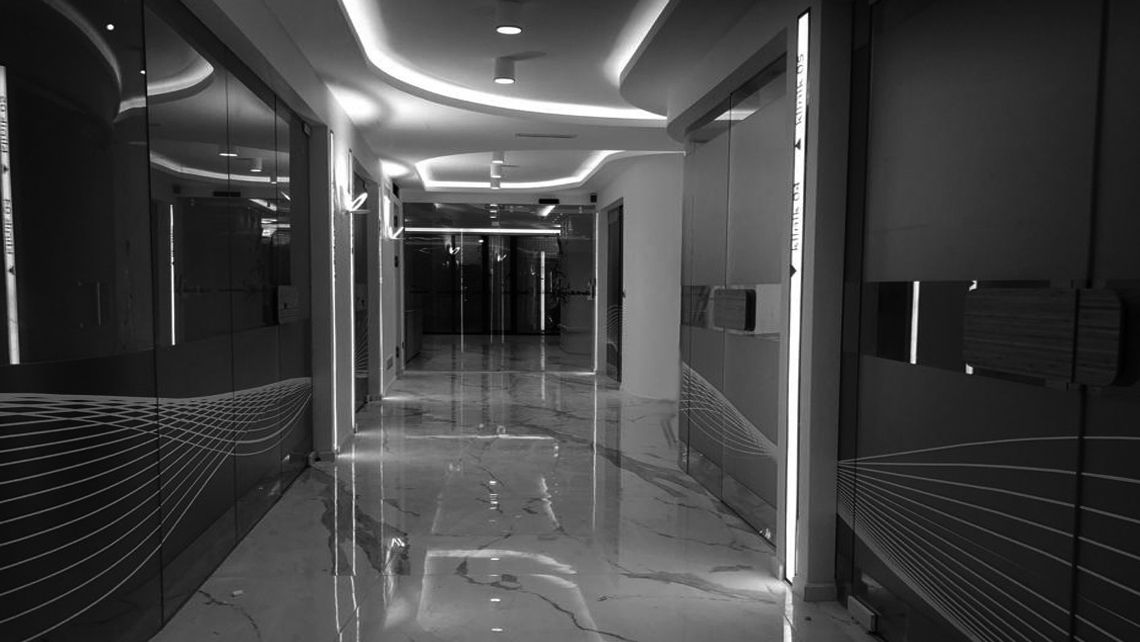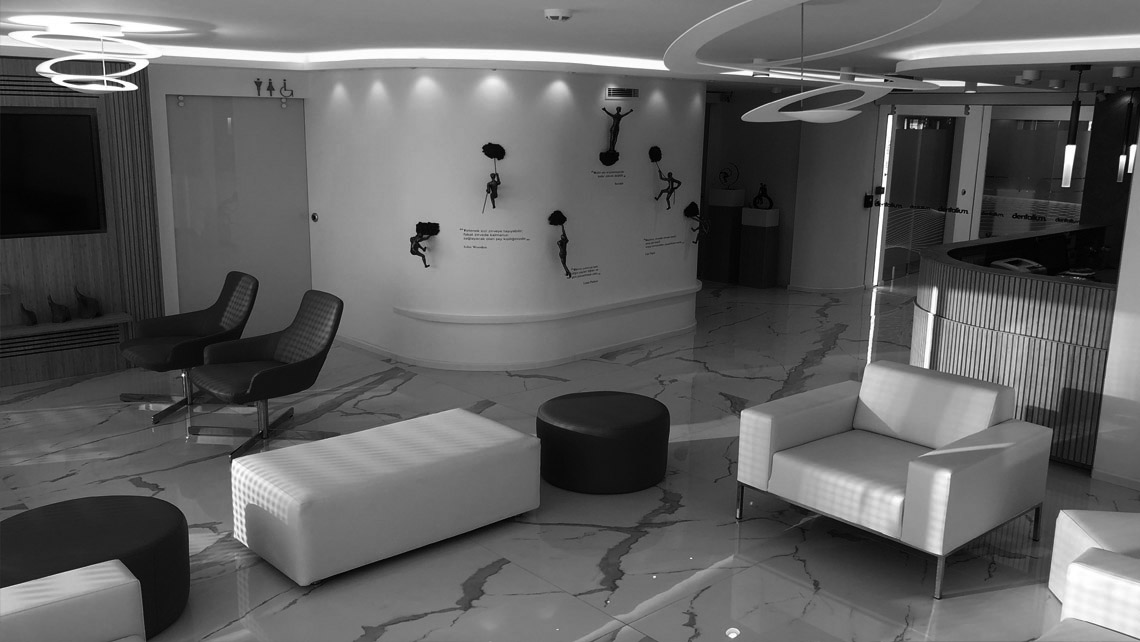ORTODONTICS
Orthodontic Treatment
QUESTION & ANSWER
- ORTHODONTICS
- Orthodontics is a special branch of dentistry that deals with the diagnosis, prevention and treatment of irregularities in the teeth and face. An irregular or "bad" bite called malocclusion can be corrected with orthodontic treatment. When the size of the teeth is not compatible with the size of the jaw, the teeth are crowded or spaced apart to fit into the jaw. In such dental and skeletal disorders Orthodontic treatment is applied to bring the teeth back into the alignment they should be in. Orthodontic treatment is not only for aesthetic concerns, but also to prevent gum diseases that may be encountered in the future. It aims to prevent problems in the jaw joint, to prevent problems in the jaw joint, to ensure chewing functionality and to eliminate this problem for individuals with speech impairment.
- WHY DO ORTHODONTIC PROBLEMS OCCUR?
- Problems with the bite of the teeth are generally called malocclusion. Malocclusions can be genetic or acquired. Genetic problems include crowding of teeth, gaps between teeth, congenital The acquired problems include missing or excess teeth, incompatibilities in the jaw, teeth and face. Acquired problems include problems related to finger sucking, airway narrowing due to tonsil and adenoids, and early loss of teeth. All these problems not only disrupt the alignment of the teeth but also affect facial development and appearance. Prevention of these habits at an early age is important for the completion of skeletal development. is of importance. Early or late loss of deciduous teeth can also lead to the formation of crowded teeth. Instead of the deciduous teeth that fall out prematurely, the permanent tooth in the mouth slides into this space. Since the teeth that need to come out of there cannot find a place for themselves, crowding occurs.
- WHAT IS THE AGE OF ORTHODONTIC TREATMENT?
- Orthodontic treatment can be applied at any age. If there is no skeletal problem and there is only crowding of the teeth, these disorders can be corrected with orthodontic treatment at any age. Age of the patient affects the duration of treatment. However, if there is a skeletal problem, these disorders can be corrected with orthopedic treatment approaches until the end of adolescence. In the adult period, such Skeletal problems can be corrected by orthodontic treatment in conjunction with orthognathic surgical operations.
-
HOW ORTHODONTIC TREATMENT IS DONE:
FIXED ORTHODONTIC BRACES (Appliances) - The most commonly used method in orthodontic treatment is to place brackets on the teeth. The brackets are adhered to the teeth with a special material and force is applied to the teeth with wires. movement is ensured. Today, there are various types of brackets made of metal or transparent materials.
- REMOVABLE BRACES
- Removable appliances, which are preferred in mild crowding and mild space stenosis, are used to solve simple problems and can be easily inserted and removed by the patient.
- EXTERNAL ORAL BRACES
- They are orthodontic appliances that correct both jaw disorders and dental disorders and receive support from outside the mouth.
- FUNCTIONAL BRACES
- Functional appliances utilize the forces generated by the person's jaw muscles and transmit these forces to the teeth and jaws, helping to ensure a proper bite. Can be worn and removed types as well as fixed types.
- TRANSPARENT PLATES
- It can be used for mild orthodontic disorders or to maintain the condition achieved after active orthodontic treatment. They are transparent aligners that can be inserted and removed by the patient. These aligners They are planned and produced by your doctor according to your individual needs. There are no brackets or wires in the mouth. However, this system is not suitable for every orthodontic disorder.
- WHAT IS THE DURATION OF ORTHODONTIC TREATMENT?
- Although the duration of treatment varies from person to person, it generally lasts for 9-30 months and in very rare cases this period can be prolonged. This period is determined by the development of the dentition, the severity of the problem, patient's compliance with the treatment and the amount of tooth movement required.
- CAN TEETH STRAIGHTENED WITH ORTHODONTIC TREATMENT DETERIORATE AGAIN?
-
The likelihood of teeth deteriorating again depends on the condition of the teeth at the beginning of the treatment process. For example, when teeth that are separated are treated with orthodontics, it is possible that the teeth
there is a high probability of separation. After orthodontic treatment, the deterioration of the teeth should be prevented. The treatment that prevents the teeth from returning to their former state and keeps the teeth fixed is called "retainer" or "reinforcement".
is called treatment. Orthodontic treatment has two steps. The first one is an active treatment that changes the position of the teeth, while the second one is an active treatment that maintains the new position of the teeth after the treatment.
is a passive treatment that stabilizes. Passive treatment is used to reinforce the main treatment. It is not correct for people who have their braces removed to think that their orthodontic treatment is completely finished;
because only their active treatment is over. Patients whose braces are removed should be checked every 2 months for 1 year and every 6 months for the next 3 years. Thus, the passive treatment period
By following the teeth throughout the treatment, in case of a possible deterioration, correction can be made without re-wire treatment. Reinforcement treatment after orthodontic treatment
Your doctor will decide on the type.
The methods used for reinforcement therapy are;- Lingual Retainer
- Transparent Plaque
1. Lingual retainer: They are thin wires that are applied to the front 6 incisors facing the tongue and are never visible from the outside. When a lingual retainer is applied, it should not be removed for at least 5 years. Because this method does not cause discomfort and does not disturb your oral hygiene and prevents the deterioration of your teeth.
2. Transparent Plaque: They are transparent, attachable and removable appliances. - WILL FIXED ORTHODONTIC TREATMENT ROT MY TEETH?
- Orthodontic treatment has no side effects such as tooth decay. However, it becomes easier for food to get stuck in the extensions of the appliances and brackets. The accumulation of food can lead to the accumulation of dental dirt called plaque. accelerates. In the presence of plaque, the number of bacteria on the tooth increases. If plaque is not cleaned, staining on the tooth surface, deterioration of the enamel layer of the tooth and caries occur. The most important point here It is important to pay attention to cleanliness while the braces are in our mouths. For this, your doctor will recommend a toothbrush that will also clean between the braces. With this special brush, the teeth brush regularly, clean the braces and use mouthwash.
- WILL ORTHODONTIC TREATMENT CAUSE PAIN IN MY TEETH?
- When the braces are first fitted, a slight pain may be felt because they apply a certain amount of force to the teeth, but it may not be seen in most cases. It is an issue that varies from person to person. The change felt within 2-3 days will return to normal and there is no constant and severe pain.
- WHAT SHOULD BE CONSIDERED AFTER BRACES ARE FITTED?
- Avoid hard foods that may cause the wires to break. Hard foods such as apples and pears should be eaten in small pieces, not bitten off. Especially plums, Foods with pits, such as olives, should not be put into the mouth with the pits, and should be eaten after the pits are removed. Acidic drinks should not be drunk. Sticky things such as gum and Turkish delight should be avoided.
- I'M TOO OLD TO BE CURED!
- Especially adult patients may think that it is too late for me. However, orthodontic treatment has no age, it can be done at any age. With the development of technology and the increase in treatment possibilities Orthodontic treatment can be easily applied to individuals of all ages. Orthodontic treatment can be applied as long as there are healthy tooth tissues and the patient pays attention to what needs to be done during the treatment process. Orthodontic treatment also has many benefits for adult patients. In cases where the teeth are very crooked, interdental caries may occur between the teeth, since tooth cleaning is not easy. Orthodontic With treatment, tooth cleaning becomes easier and the formation of interface caries is prevented.
- WHAT IS THE AGE FOR THE FIRST CONTROL?
- For children, it is recommended that they undergo orthodontic control before the age of 7. Early diagnosis of orthodontic problems prevents the need for complex treatment that may be encountered in the future. will be passed.
- DO CROOKED TEETH STRAIGHTEN OVER TIME?
- After the age of 10, it is not possible for crowding to correct itself. An intervention is absolutely necessary. For this reason, crowded teeth do not improve over time.



